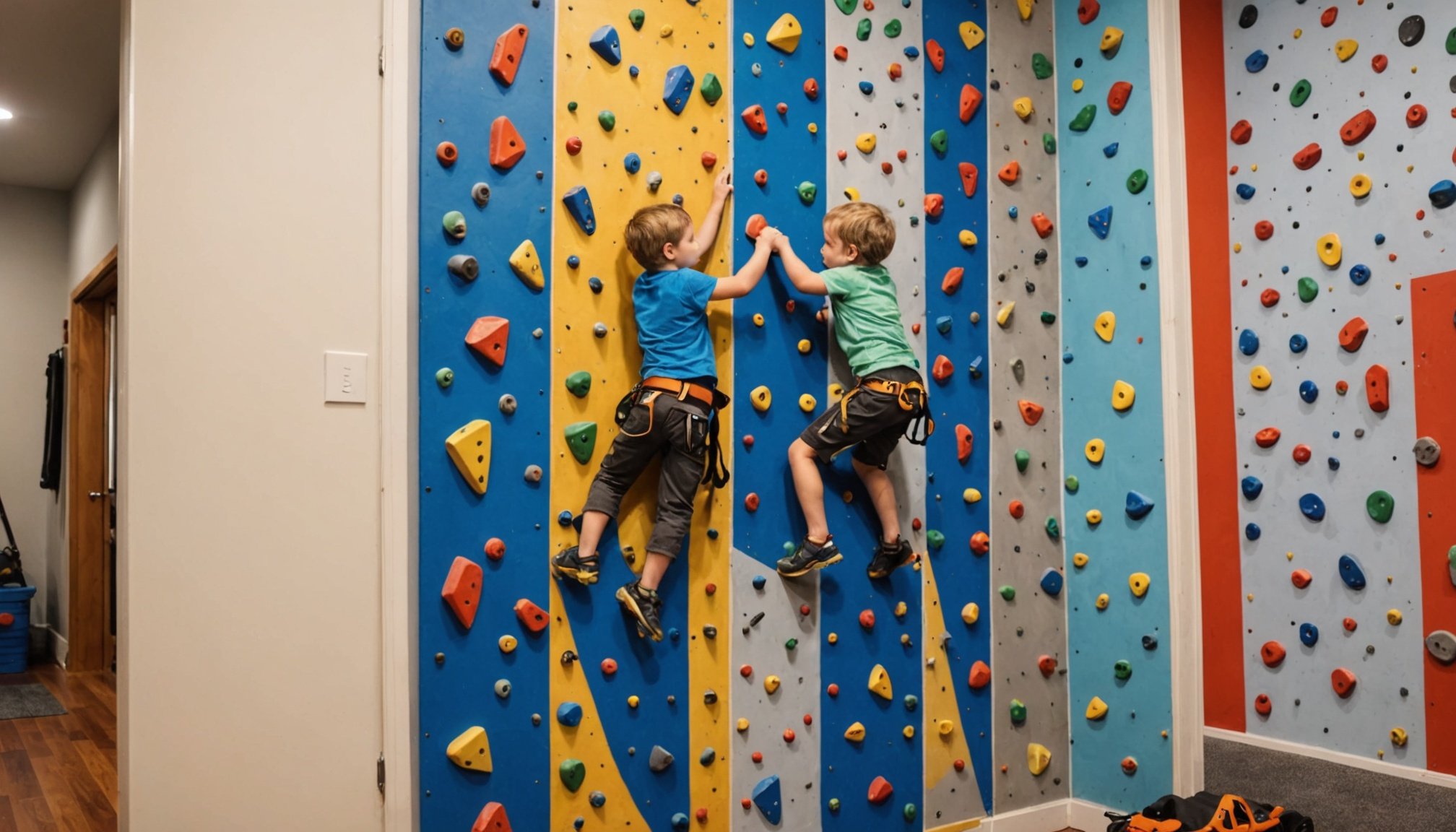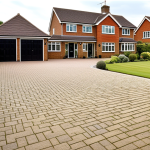Creating a Fun and Safe DIY Indoor Climbing Wall for Energetic Kids
Why an Indoor Climbing Wall is a Great Idea
If you have energetic kids at home, you’re likely always on the lookout for ways to keep them active, engaged, and safe. An indoor climbing wall is an excellent solution that offers a multitude of benefits, from enhancing physical fitness to fostering problem-solving skills. Here’s why you should consider creating one:
- Physical Development: Climbing walls help children develop their gross motor skills, including strength, balance, and coordination. It’s a fun way to get them moving and exercising without feeling like they’re in a traditional workout.
- Problem Solving: Climbing requires strategic thinking and problem-solving skills. Kids learn to assess routes, plan their moves, and adapt to challenges, all of which are valuable life skills.
- Safety: An indoor climbing wall can be designed with safety in mind, using soft flooring and proper equipment to minimize the risk of injury.
- Fun and Engagement: Let’s face it – climbing is fun It’s an activity that can captivate kids for hours, keeping them entertained and engaged in a positive way.
Choosing the Right Materials and Equipment
Before you start building, it’s crucial to select the right materials and equipment to ensure your climbing wall is both safe and functional.
Also read : Top Strategies to Achieve Privacy in Your Glass-Walled Sunroom
Climbing Holds
Climbing holds are the most critical component of your climbing wall. Here are a few options to consider:
- Jungle Gym Kingdom Rock Climbing Holds: These holds come in various shapes and colors, making them visually appealing and engaging for kids. They are made from durable plastic and include an 8ft long climbing rope, which can be integrated into your wall or used as part of an obstacle course[3].
- Modular Climbing Wall Panels: These panels offer a more customizable approach, allowing you to build a wall that fits your specific space and design preferences. They are perfect for creating a campus board or a more complex climbing route[2].
Wall Surface
The surface of your climbing wall is equally important. Here are some considerations:
In the same genre : Elevate Your Kitchen Aesthetic: Trendy Ideas for Integrating Recycled Glass Countertops
- Plywood: A thick, sturdy plywood is often the best choice for a climbing wall. It provides a solid base for your holds and can withstand the weight and activity of kids climbing.
- Textured Surface: Adding a textured surface or a climbing-specific board can enhance grip and make the climbing experience more challenging and fun.
Safety Gear
Safety should always be your top priority. Here are some essential safety gear items:
- Soft Flooring: Installing soft flooring, such as foam mats or thick carpets, around the climbing area can significantly reduce the risk of injury from falls.
- Harnesses and Ropes: For more advanced climbers, consider using harnesses and ropes to add an extra layer of safety.
Step-by-Step Guide to Building Your Climbing Wall
Building an indoor climbing wall can be a fun and rewarding DIY project. Here’s a step-by-step guide to help you get started:
Planning Your Wall
Before you begin, plan out your wall carefully:
- Measure Your Space: Determine the size of your wall based on the space available in your home. Consider the height, width, and any obstacles that might affect the design.
- Design Your Route: Decide on the layout of your climbing holds. You can create a simple route for younger kids or a more complex one for older children.
Preparing the Wall
Here’s how to prepare your wall:
- Install Plywood: Attach the plywood to your wall studs to create a sturdy surface. Make sure it is securely fastened.
- Add Textured Surface (Optional): If you’re using a textured surface or climbing board, attach it to the plywood.
Installing Climbing Holds
Installing the climbing holds is the most exciting part:
- Follow Instructions: Use the instructions provided with your climbing holds to ensure they are installed correctly. Typically, this involves drilling holes, inserting nut inserts, and screwing in the holds.
- Test the Holds: Before letting the kids climb, test each hold to ensure it is securely attached.
Adding Safety Features
Don’t forget to add safety features:
- Install Soft Flooring: Place foam mats or thick carpets around the climbing area.
- Set Up Harnesses and Ropes (if applicable): If you’re using harnesses and ropes, set them up according to the manufacturer’s instructions.
Tips for a Safe and Fun Climbing Experience
Here are some tips to ensure your indoor climbing wall is both safe and fun:
Age-Appropriate Design
- For Younger Kids: Use larger, easier-to-grasp holds and place them closer together to make climbing more accessible.
- For Older Kids: You can use smaller holds and create more challenging routes.
Supervision
- Always Supervise: Make sure an adult is present when kids are climbing to ensure safety and provide assistance if needed.
Maintenance
- Regular Checks: Regularly inspect the climbing holds and wall surface to ensure everything is secure and in good condition.
Practical Insights and Actionable Advice
Here are some practical insights and actionable advice to make your DIY project a success:
Budgeting
- Set a Budget: Determine how much you are willing to spend on materials and equipment. Climbing holds and plywood can vary in price, so plan accordingly.
Space Considerations
- Use Available Space Wisely: If you have a small playroom, consider using modular climbing wall panels to maximize your space[2].
Involving the Kids
- Let Them Help: Involve your kids in the planning and building process. This can make the project more enjoyable and give them a sense of ownership.
Customer Feedback and Real-Life Examples
Here’s what some customers have to say about their DIY indoor climbing walls:
- Ease of Installation: “These assemble very easily, very stable, perfect amount to keep them close enough for our 2-year-old grandson to use. He loves his new rock wall.”[3]
- Durability: “Still holding strong (the hand holds AND my son) after 2 months. Really fun addition, no complaints here.”[3]
- Indoor Use: “Great way to build indoor activity for your toddler. Easy to use and install.”[3]
Comparative Table: Climbing Wall Kits
Here’s a comparative table to help you choose the right climbing wall kit for your needs:
| Product | Jungle Gym Kingdom Rock Climbing Holds | Modular Climbing Wall for Kids |
|---|---|---|
| Holds | 25 assorted holds in 3 shapes and 5 colors | Customizable holds and panels |
| Material | Durable plastic | Various materials (wood, plastic) |
| Ease of Installation | Easy with instruction guide and hardware | Easy with modular design |
| Safety Features | Includes 8ft climbing rope | No specific safety features included |
| Age Range | Suitable for kids of all ages | Suitable for kids of all ages |
| Price | Generally more affordable | Can vary based on customization |
Creating a DIY indoor climbing wall is a rewarding project that can provide your kids with hours of fun and physical activity. By choosing the right materials, following a step-by-step guide, and ensuring safety, you can create a space that fosters gross motor skills, problem-solving abilities, and a love for climbing.
Remember, the key to a successful DIY project is careful planning, attention to detail, and involving your kids in the process. With the right approach, your indoor climbing wall can become a central part of your home playground, offering endless opportunities for play, learning, and adventure.











